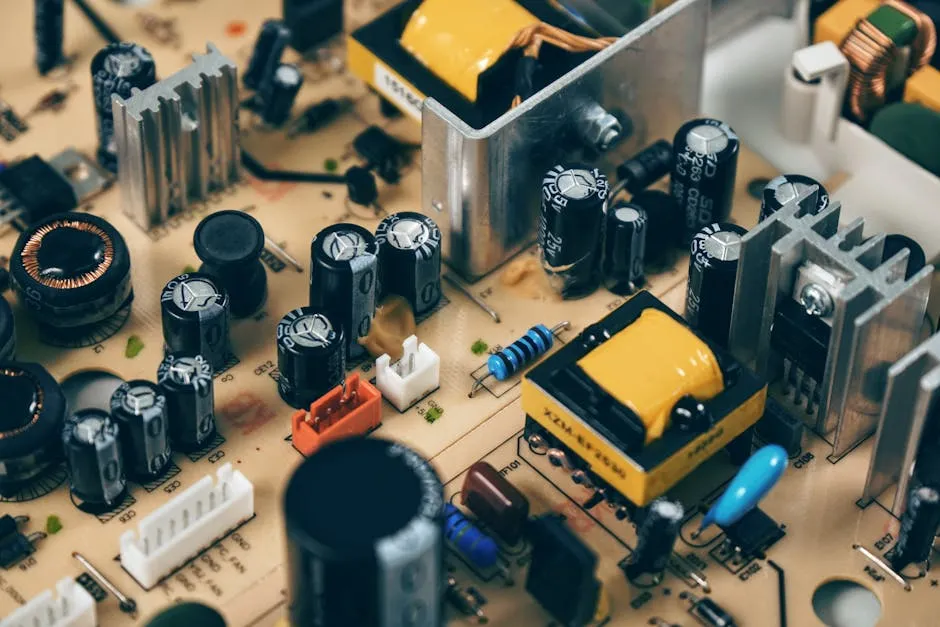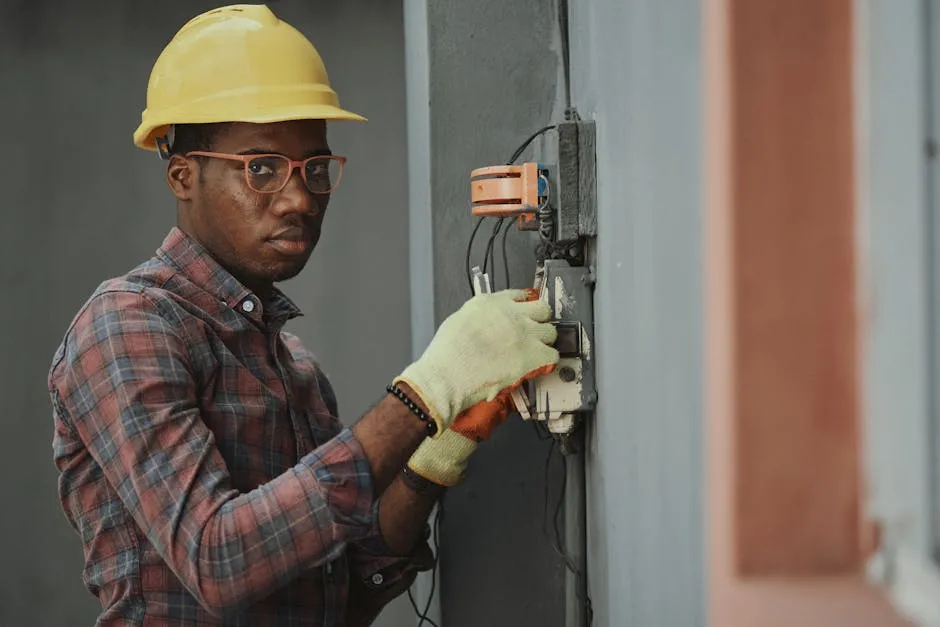
Why Do Wire Nuts Melt?
Introduction
Wire nuts play a vital role in electrical connections. They secure and insulate wire splices, keeping them safe from short circuits. However, melting wire nuts are a common concern. This article aims to uncover the reasons behind this issue.
Summary and Overview
Wire nuts, also known as twist-on connectors, are small, colorful caps that connect electrical wires. They ensure that wires stay connected and insulated. Unfortunately, they can melt, especially in certain conditions. Overloading circuits or poor connections often lead to this problem.
When wire nuts melt, they can create significant hazards. The most pressing dangers include fire risks and electrical failures. If wires overheat, they can ignite surrounding materials. Proper installation and regular maintenance of these connections are essential to prevent such issues. Ensuring secure connections helps keep your home safe and your electrical systems functional.
To ensure your electrical connections are secure, consider investing in a Wire Nut Assortment Pack. This essential tool ensures you have the right size and type of wire nuts on hand for any project.

Causes of Wire Nut Melting
Poor Connections
Loose or improperly made connections are a major cause of wire nut melting. When wires don’t fit snugly together, resistance builds up. This resistance generates heat, causing the wire nut to overheat and eventually melt. Tight connections are crucial for good conductivity. Without them, electrical current struggles to flow efficiently.
Choosing the right size of wire nut is equally important. Using a nut that’s too small or not designed for the number of wires can lead to problems. If the wire nut doesn’t fit well, it won’t secure the wires properly, increasing the risk of overheating. Always ensure your connections are tight and appropriately matched to prevent these issues.
To achieve those tight connections, an Electrical Wire Stripper Tool is a must-have for your toolbox. It helps you strip wires easily and prepares them for secure connections.

Overloading
Electrical overload occurs when a circuit draws more power than it can handle. This can significantly affect wire nuts. Appliances like dryers, heaters, and air conditioners often draw high currents, which can lead to overheating. For instance, plugging in multiple devices on the same circuit can exceed its capacity.
To avoid overload, you should know the safe load limits of your circuits. A standard 15-amp circuit can handle about 1,800 watts. When in doubt, check the manufacturer’s specifications for your appliances. If your circuit is overloaded, it can cause wire nuts to melt, leading to potential fire hazards and electrical failures.
Keep your circuits in check with a reliable Digital Multimeter. This handy tool allows you to measure voltage, current, and resistance, ensuring your circuits are operating within safe limits.

Environmental Factors
High temperatures can significantly impact wire nuts. When exposed to extreme heat, wire nuts may soften or melt, leading to failure. Attics and areas near heaters are especially vulnerable. These locations often see higher ambient temperatures, which can exacerbate the problem.
Moisture also plays a role in the melting of wire nuts. Humidity can cause corrosion on connections, leading to poor conductivity. If moisture builds up in an electrical box, it creates a perfect storm for overheating. It’s essential to keep wire connections dry, particularly in less ventilated areas.
Being aware of these environmental factors helps you identify potential risks in your home. Keep your wiring safe with a Heavy Duty Extension Cord that can withstand higher temperatures and provide safe connections in your home.

For more information on how environmental factors can contribute to workplace issues, check out this article on why do environmental factors contribute to glossophobia in the workplace.
Understanding the impact of environmental factors can help you mitigate risks in your home. Learn more about environmental influences.
Material Quality
The materials used in wire nuts are crucial for their performance. Most wire nuts are made from plastic polymers, which can handle a certain amount of heat. However, low-quality wire nuts may lack the durability needed for safe connections. These inferior products can melt under normal operating conditions.
Using UL-listed wire nuts is vital for safety. These products meet specific testing standards, ensuring they can withstand heat and resist melting. Investing in high-quality wire nuts is not just a good practice; it’s essential for maintaining safe electrical systems.
For an extra layer of safety, consider using 3M Electrical Insulation Tape. This tape helps to reinforce connections and provides additional protection against moisture and heat.

Age and Wear
Wire nuts aren’t eternal. Over time, they can degrade. Older wire nuts suffer from wear and tear. This can lead to increased resistance. And with resistance comes heat generation.
Think of it this way: it’s like a car tire losing air. As it deflates, it works harder, creating more friction. Similarly, a worn wire nut struggles to maintain a secure connection. This struggle can cause overheating, eventually leading to melting.
Regular inspections are key. Checking your electrical connections can catch issues early. Look for signs of wear, such as cracks or discoloration. By staying proactive, you ensure your wiring remains safe and effective. To assist with your inspections, a Voltage Tester can help you identify any issues quickly and efficiently.

Signs of Melting Wire Nuts
Recognizing melting wire nuts is crucial for safety. One common visual sign is discoloration. If you notice a wire nut turning brown or black, it’s time for concern. Another indicator is deformation. If the nut looks misshapen, it’s likely overheating.
Burnt smells can signal trouble, too. A strong, unpleasant odor indicates insulation or plastic melting. In some cases, smoke may even be present. If you see smoke, turn off the power immediately. Ignoring these signs can lead to serious hazards, including fires.
Stay vigilant and inspect your wire nuts regularly. Identifying these visual indicators early can save you from potential disasters. Remember, safety should always come first in electrical matters. If you’re looking for a reliable LED Work Light to illuminate your workspace during inspections, this is a great option.

Electrical Symptoms
When wire nuts melt, they can disrupt electrical circuits significantly. You might notice tripped breakers or flickering lights. These symptoms indicate overheating, which can damage your electrical system. Ignoring these signs could lead to worse problems.
Recognizing these symptoms early is crucial. It allows you to address issues before they escalate. Regular checks on your electrical system can help catch these problems. Staying vigilant protects your home and ensures electrical safety.

Preventative Measures
Proper Installation Techniques
Installing wire nuts correctly is essential for safety. Start by stripping the wire ends to expose enough copper. Then, twist the wires together securely before applying the wire nut. Ensure it fits snugly, as a loose connection can lead to overheating.
Choosing the right size and type of wire nut matters too. Each wire nut is designed for specific wire gauges and numbers. Using the appropriate size enhances electrical conductivity and reduces the risk of melting. A Wire Crimping Tool can also aid in creating secure connections where needed.

Regular Maintenance
Regularly inspecting electrical connections is vital for safety. Homeowners should check for signs of wear, such as discoloration or cracks in wire nuts. Keep an eye out for unusual smells or heat near connections.
Consider setting a schedule for inspections, perhaps every six months. This proactive approach can catch issues early, preventing more significant problems down the line. Always prioritize safety in your electrical system. Additionally, having a Home Repair Manual can guide you through any necessary repairs and maintenance.

Upgrading Electrical Systems
If your home has older wiring, it might be time for an upgrade. Older systems often can’t handle today’s electrical demands. Upgrading to modern wiring can enhance safety and efficiency.
Newer electrical systems come with better materials and technology. They reduce the risk of overheating and improve overall performance. Investing in an upgrade can provide peace of mind and protect your home from electrical hazards. A Smart Home Hub can help manage and monitor your electrical systems for maximum efficiency.

Conclusion
Understanding why wire nuts melt is crucial for safety. Recognizing symptoms early can prevent electrical hazards. Proper installation and regular maintenance are key to keeping your electrical system safe. Be proactive in addressing any issues to ensure a secure environment for you and your family.
Before you go, make sure you’re prepared for any emergencies with a First Aid Kit in your home. It’s always better to be safe than sorry!
Please let us know what you think about our content by leaving a comment down below!
Thank you for reading till here 🙂
All images from Pexels




